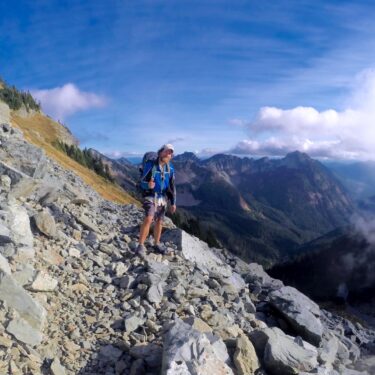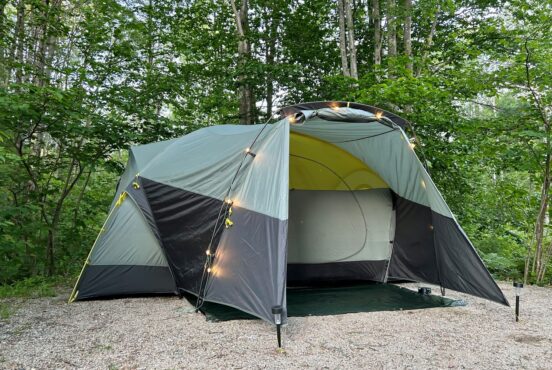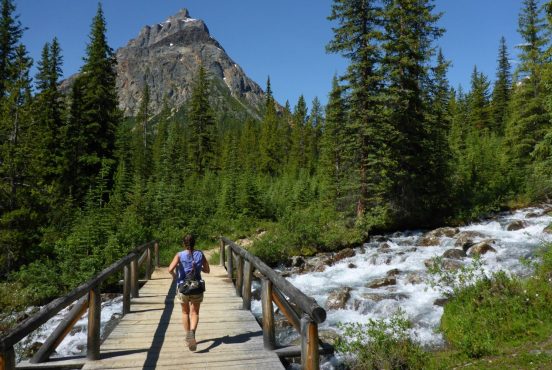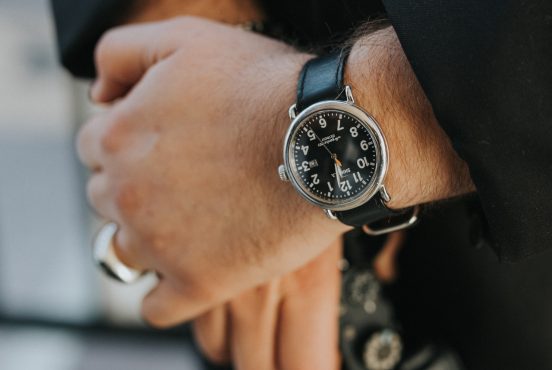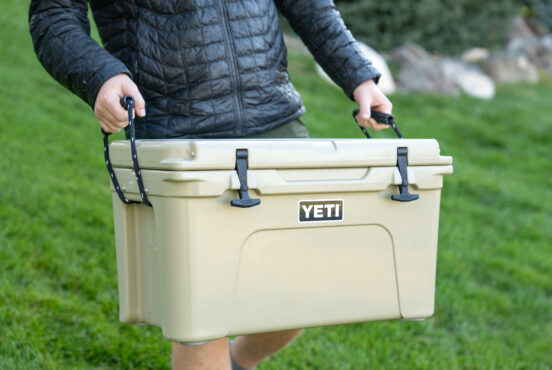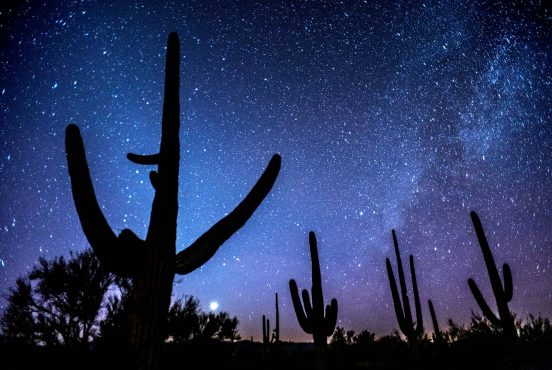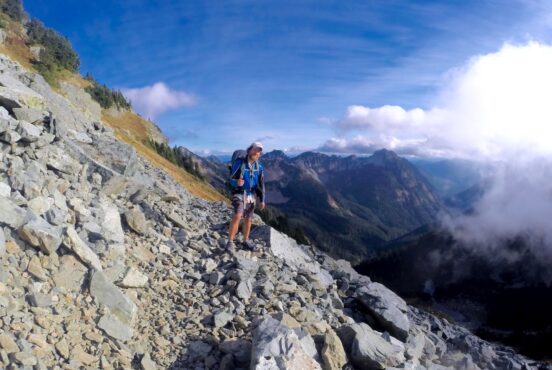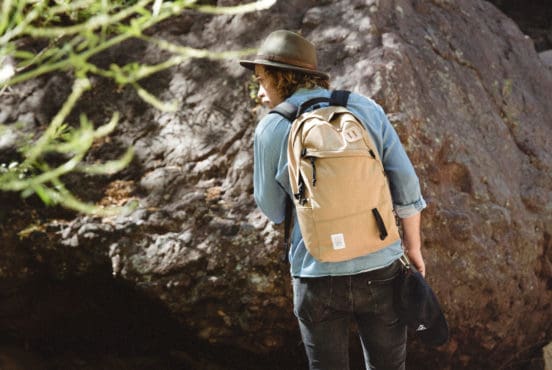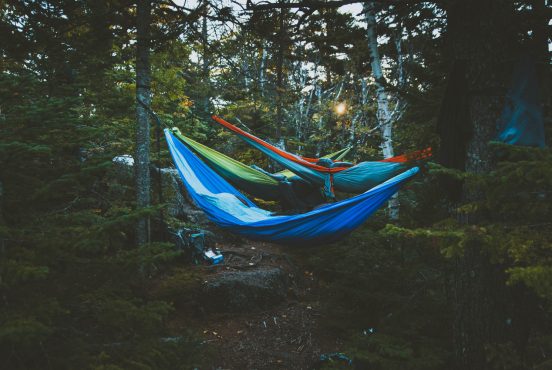We research, evaluate and select travel destinations based on a number of factors, including our writers’ experience, user reviews and more. We may earn a commission when you book or purchase through our links. See our editorial policy to learn more.
Sleeping on air sounds luxurious, but it can be downright cold. Avoid a chilly backside by hammock camping with any of these underquilts, as tested by our team.
If you’re here, chances are you’ve heard horror stories about the dreaded “cold butt syndrome” while hammock camping or experienced it yourself. The solution? A good underquilt.
Hammock underquilts add a layer of insulation below your hammock that minimizes heat loss and fends off drafts. When you lie in a hammock, your body heat warms the air around you. Wind passing beneath the hammock can whisk away your body’s warmth. An underquilt traps body heat, forming a warm microclimate around you to protect you from the cold.
Like their top quilt counterparts, underquilts come in various styles, fabrics, temperature ratings, and fill materials.
As hammock camping continues gaining traction, cottage companies and name brands are jostling for underquilt dominance, leaving a glut of options for buyers to sort through. But don’t worry. We’ve tested and compiled a list of the best hammock underquilts to cover your bum outdoors.
Editor’s note: We updated this article on April 1, 2024 to include new underquilt selections. We also underwent a thorough testing process to ensure each underquilt inclusion was tried and tested by our team.
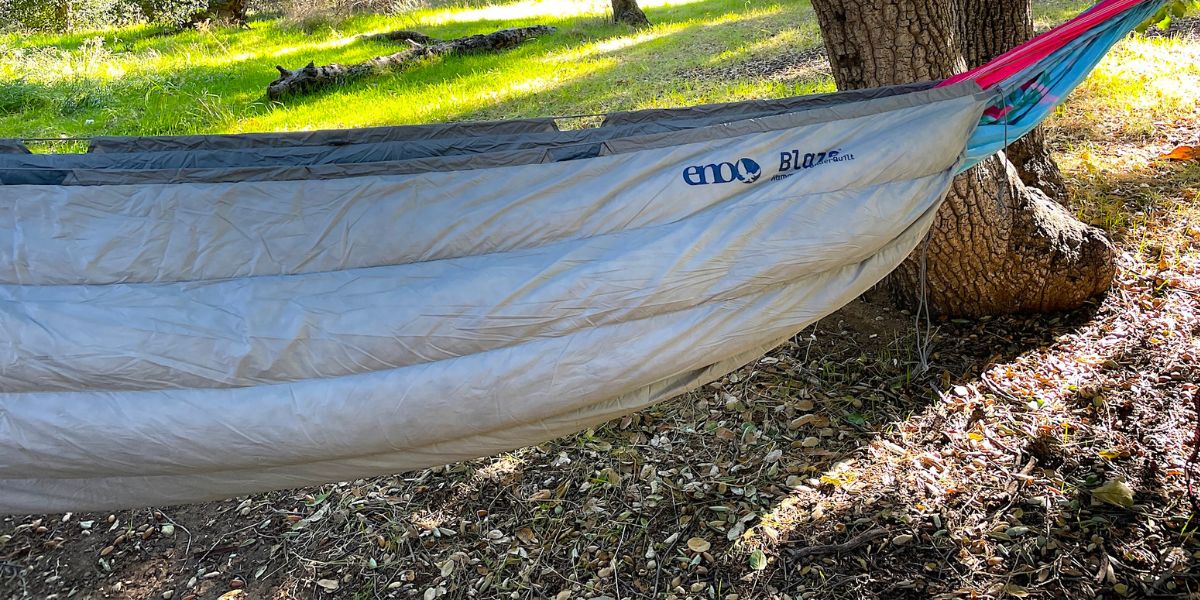
Our Top Picks: Best Hammock Underquilts
- Best Overall Underquilt: UCQ Zeppelin
- Most Versatile Underquilt: ENO Blaze
- Best Value Underquilt: Outdoor Vitals Stormloft
Best Overall Hammock Underquilt
UGQ Zeppelin
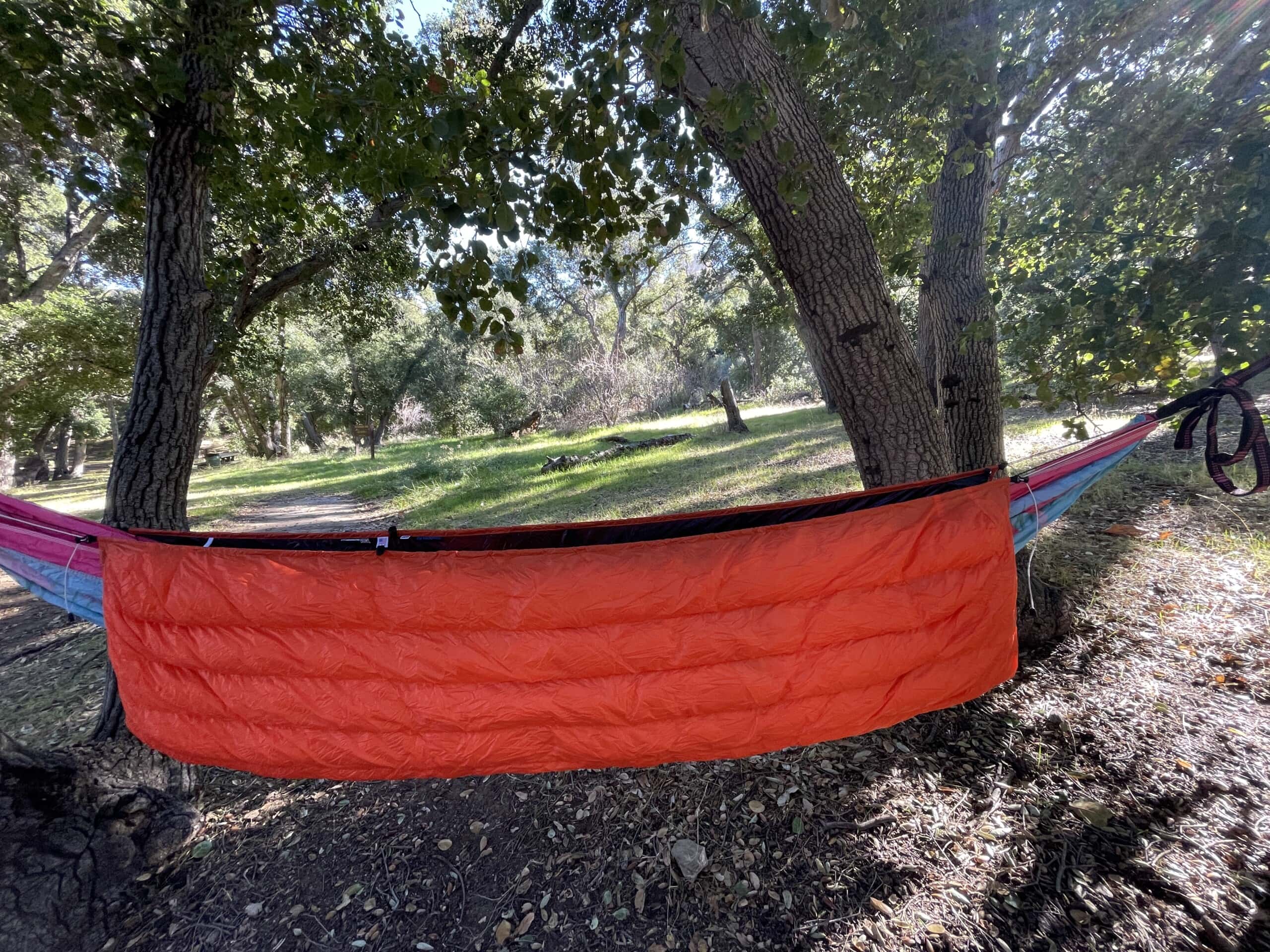
What we like: Handcrafted in the good ole’ USA, UGQ’s Zeppelin underquilt stands tall in the hammocking community, striking the coveted trifecta of cost, warmth, and weight.
UGQ Outdoors has been rocking the hammocking gear game since 2011. Their hammock geeks handcraft every item in their Jackson, Michigan shop before it reaches your door. Every underquilt comes with a card spotlighting the artisans who brought your piece to life (Thank you Tim, Phillip, Christian, and Alyssa!)
This was a product I was stoked to unbox, and it did not disappoint. From the meticulous stitching, silky smooth micro-ripstop fabric, and overstuffed draft collars–every detail was a nod to the cottage company’s commitment to craftsmanship.
The Zeppelin features ten dual differential cut chambers, engineered to enhance loft and insulation, and smaller chambers that help evenly distribute the down filling. If that’s not enough, you can overstuff your quilt or upgrade to 950 fill power, making the Zeppelin ideal for shoulder season trips and cold sleepers.
As far as I’m concerned, the Zeppelin’s suspension system is its biggest selling point. For underquilt newbies, there’s a bit of a learning curve. The underquilt comes with a full-channel primary suspension and S-biner attachments. It also includes a removable secondary suspension with foot and head drawcords to adjust your quilt’s alignment and draft collars for temperature control.
Additionally, integrated hooks prevent quilt creep by connecting to your hammock’s tie-outs. Once you get the hang of it (pun intended), fine-tuning the underquilt from the comfort of your hammock is a breeze.
Tech Specs
- Weight: Starting at 14.27 oz.
- Base price: Starting at $235
- Insulation type: Down
- Temperature rating: 0°F to 40°F
Pros and Cons
- Pro: High-quality materials and exquisite craftsmanship you can feel right out of the box
- Pro: Includes two suspension systems to fine-tune your underquilt’s alignment and temperature control
- Pro: Integrated hooks eliminate quilt creep
- Con: For newcomers, it may take some time and practice to master the suspension system
Most Versatile Hammock Underquilt
ENO Blaze
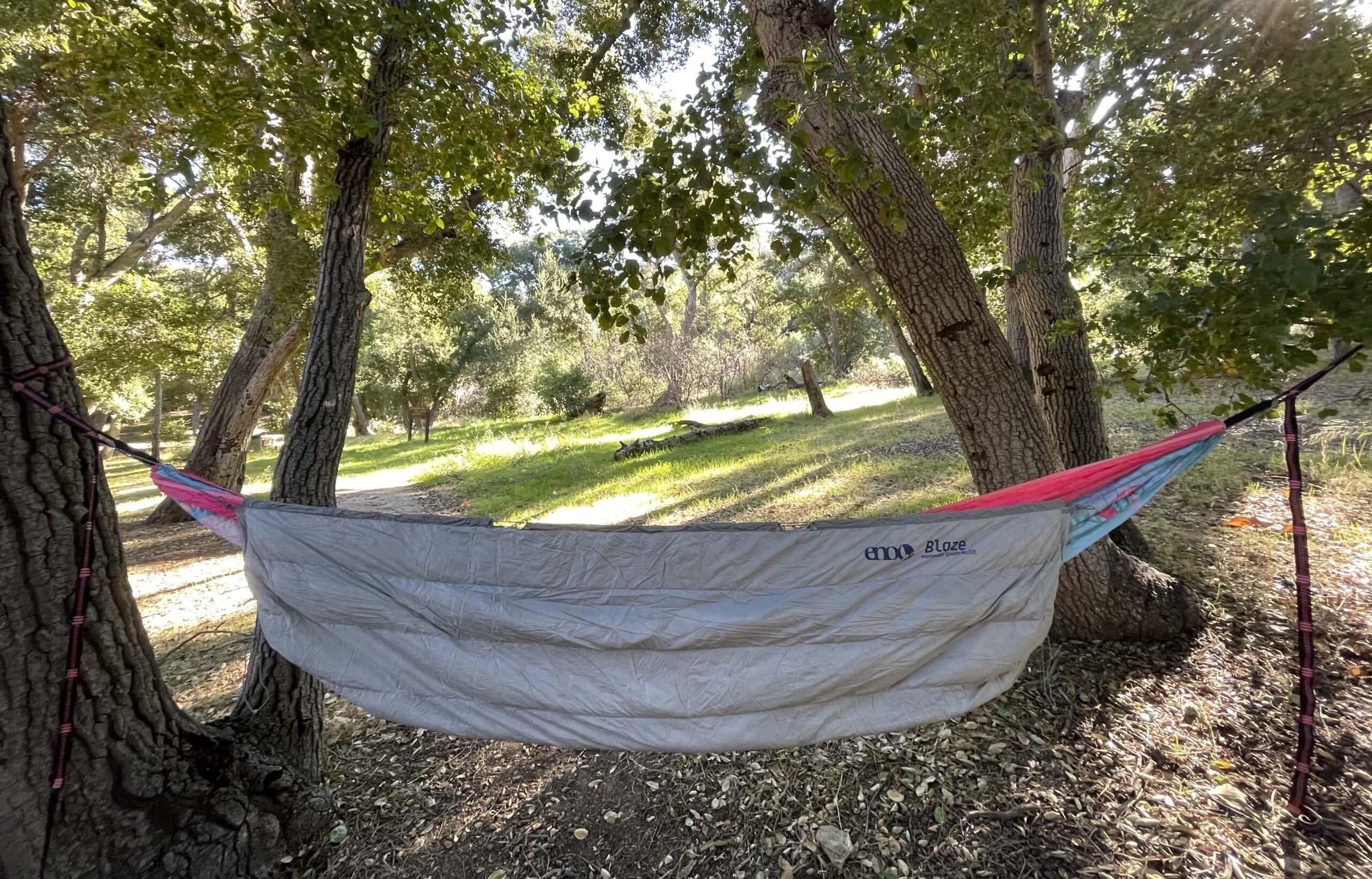
What we like: Compatible with most ENO hammock models, the Blaze underquilt promises an effortless setup, high thermal efficiency, and a premium-grade addition to your hammocking gear ensemble.
As an industry leader in hammock gear and accessories, ENO has set the standard for quality, innovation, and reliability. Beyond hammocks, ENO also offers three models of underquilts: Ember, Vulcan, and Blaze (the latter being the warmest of the three).
The Blaze underquilt comes stuffed with eco-friendly 750 fill power DownTek, a water-resistant filling that stays dry 900% longer than untreated down, ideal for most three-season conditions down to 30°F. Its differential baffle construction eliminates cold spots and ensures maximum loft. It also comes with a mesh storage bag to keep your underquilt partially lofted between use to protect the down.
ENO designed their Blaze underquilt with a suspension system that’s simple, versatile, and compatible with most of their hammock models. If you’re already the proud owner of an ENO hammock, you can integrate the underquilt into your ENO carabiner and toggle style hammock without additional accessories or modifications. But it’s not a requirement. I used a Bear Butt double hammock to test the Blaze underquilt without incident.
Though lacking a dedicated draft collar, the Blaze makes up for this with adjustable shock cords, enabling you to personalize the underquilt’s fit and tension around the hammock. Notably, its wide size allows easy manipulation. Draping the sides of the underquilt over and around your body mimics a traditional sleeping bag, providing an additional layer of warmth–a boon in cold conditions.
Sure, the Blaze comes with a steep price tag for its comparative warmth-to-weight ratio. But for ENO fans seeking continuity within the brand ecosystem, it’s a premium choice. The Blaze is a quality underquilt that will keep you warm on just about any camping trip, making it a worthwhile investment for ENO devotees.
Tech Specs
- Weight: 28 oz.
- Base price: $300
- Insulation type: Down
- Temperature rating: Down to 30°F
Pros and Cons
- Pro: Compatible with most ENO hammock models as well as other hammock brands
- Pro: A wide design allows you to drape it over your hammock to mimic a traditional sleeping bag for added insulation
- Pro: Setup is dead simple
- Con: Pricey compared to other underquilts on the market with a similar warmth-to-weight ratio
Best Value Hammock Underquilt
Outdoor Vitals Stormloft
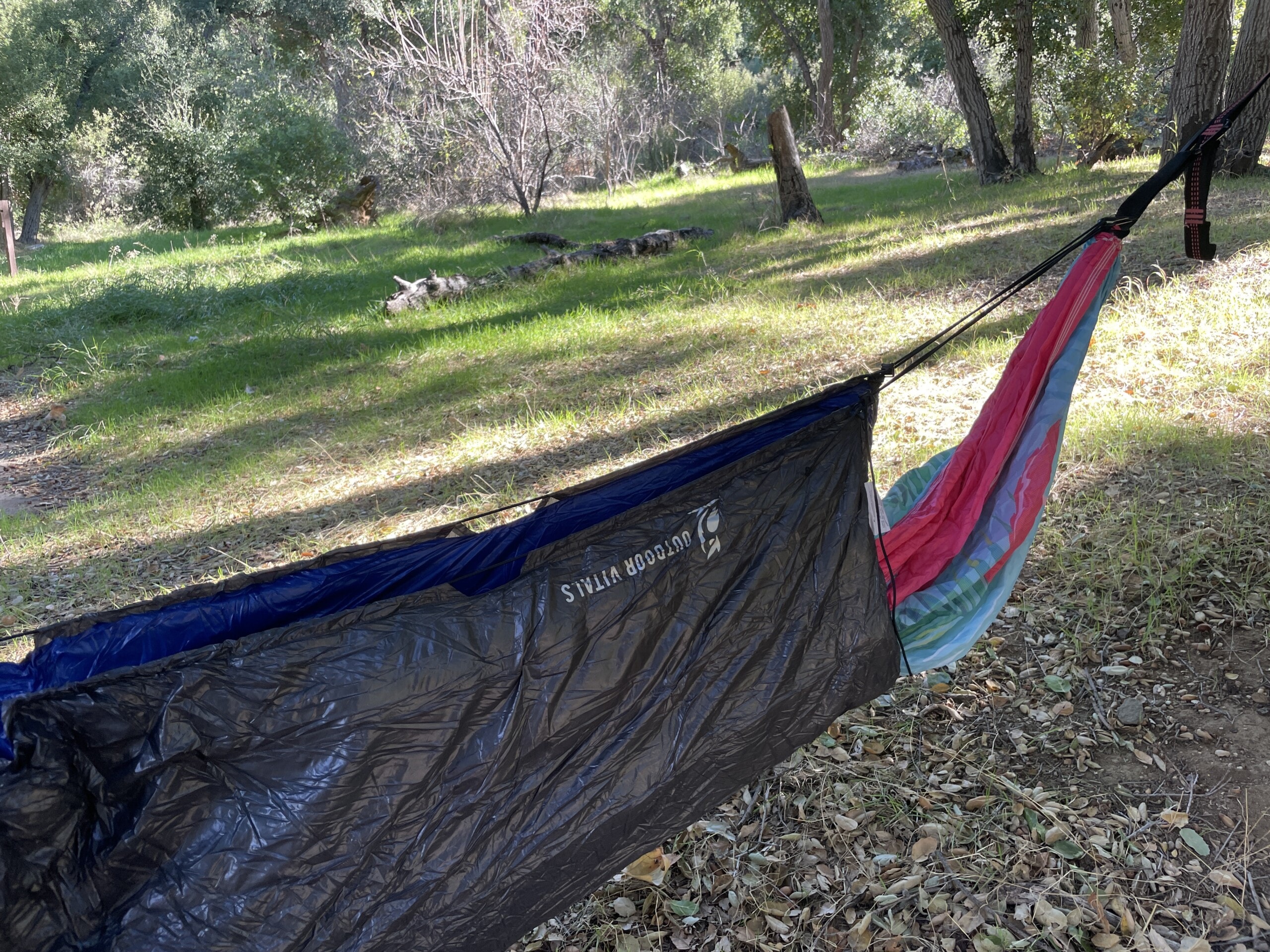
What we like: An ultralight underquilt that offers cottage company quality at a budget-friendly price? Yes, please.
Not to be confused with their top quilt of the same name, the Outdoor Vitals Stormloft Underquilt aims to lighten your load and give you a good night’s sleep with its ultralight construction. Featuring a tough 10-denier ripstop nylon shell and insulating 800+ fill power down, the Stormloft provides waterproof protection, ventilation, warmth, and feather-lightness—guaranteeing high-end performance without weighing you down.
The underquilt comes with S-biners that attach to either end of your hammock for easy setup. Its fully integrated suspension system allows the quilt’s height and tension to be adjusted through a single control point while a second bungee adjustment cord keeps out drafts.
While the Stormloft feels warm and substantial, its vertical baffles could occasionally lead to down migration and cold spots at night. However, it does come with draft collars, which aren’t a necessity but certainly a nice-to-have for an underquilt suitable for cold weather camping.
My only critique is that the Stormloft’s dead simple design can end up working against itself. The underquilt’s double barrel attachments don’t clamp down tightly enough, allowing the cords to pass through the line locks. This can easily be mitigated by tying off the ends of the draw cords, but as indicated by user feedback, the quilt seems most compatible with shorter hammock configurations, single hammocks, or bridge hammocks.
Nevertheless, Outdoor Vitals has outdone itself with the Stormloft, achieving the ideal blend of warmth, weight, and affordability that budget-conscious hikers who want to stay light on their feet will appreciate.
Tech Specs
- Weight: Starting at 20 oz.
- Base price: $190
- Insulation type: Down
- Temperature rating: 0°F to 30°F
Pros and Cons
- Pro: Compatible with most ENO hammock models as well as other hammock brands
- Pro: A wide design allows you to drape it over your hammock for added warmth
- Pro: Setup is dead simple
- Con: Pricey compared to other underquilts on the market with a similar warmth-to-weight ratio
Hammock Underquilts: Honorable Mentions
Warbonnet Outdoors Wooki
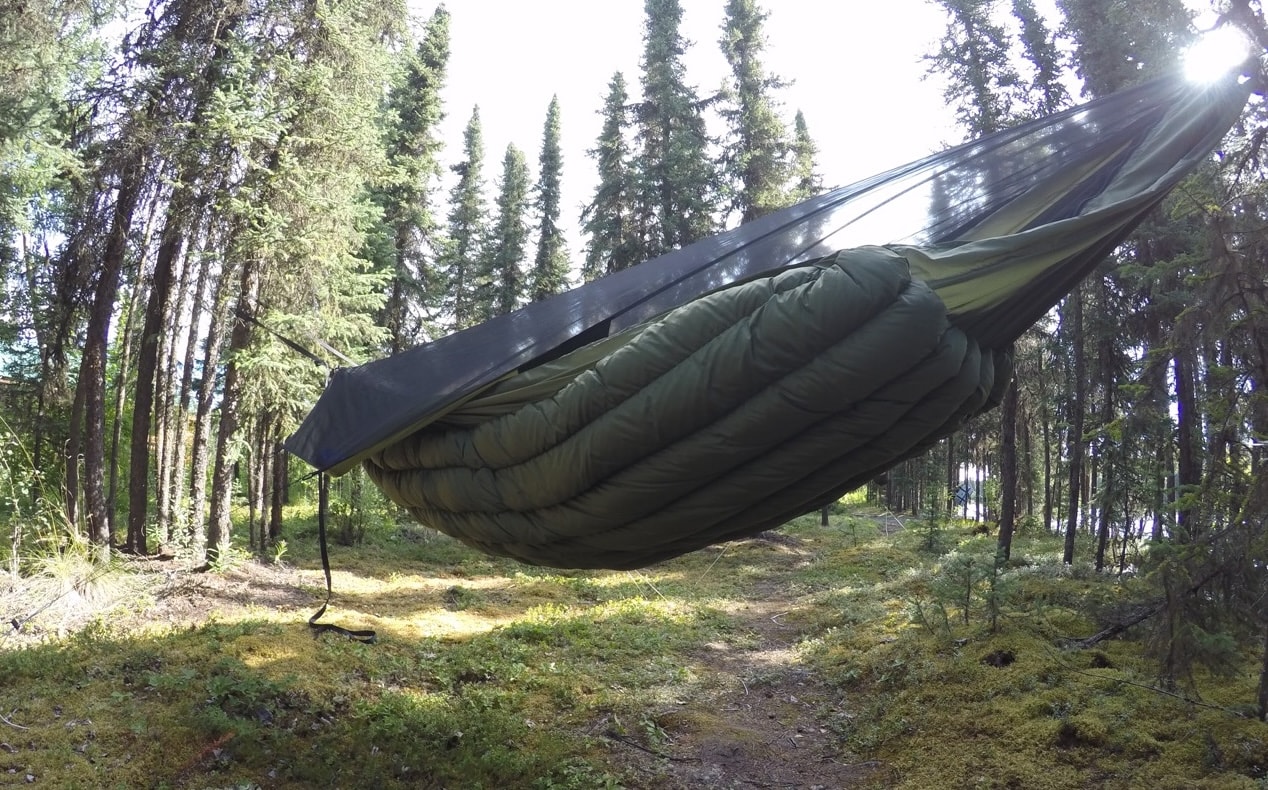
What we like: Clocking in at just over 10 oz. to start, this is the preferred choice for ultralight hammockers who live by the mantra, “Every ounce counts.”
Warbonnet Outdoor’s Wooki underquilt delivers a superior ultralight hammock at a competitive price point.
If you’re already the proud owner of a Warbonnet hammock, the Wooki is tailor-made for their Blackbird, Blackbird XLC, Eldorado, and Traveler hammocks. Its tapered design includes a 76” x 44” insulated section that tapers down toward the bottom of the hammock to keep your feet toasty.
The Wooki boasts a 20-denier ripstop nylon shell treated with a PFC-free durable water repellent (DWR) finish. PFCs are a group of synthetic chemicals typically used to make outdoor gear water-resistant. Fabrics without PFCs contain more sustainable water-resistant coatings to keep your gear dry.
Take a peek inside and you’ll find 850 fill water-resistant duck down with the option to upgrade to 900 fill. We give the Wooki extra points for meeting the Responsible Down Standard (RDS), a certification that verifies the ethical treatment of ducks and geese throughout the supply chain. Because it doesn’t hurt to know what’s in the gear you buy, right?
Warbonnet offers a stock version of the Wooki, but we dig the expanded options you get with their custom model. Choose from various colors and patterns, adjust the temperature rating, and customize your outer material, whether it’s the featherlight 10-denier, the rugged 20-denier, or the versatile 15-denier nylon that strikes the perfect balance between weight and durability.
They’re also the only maker on this list that offers an underquilt with a Scandinavian temperature rating, meaning the quilt is rated to handle temperatures as low as -20°F. Brrrr!
Tech Specs
- Weight: Starting at 10.52 oz.
- Price: Starting at $220
- Insulation type: Down
- Temperature rating: -20°F to 50°F
Pros and Cons
- Pro: Its tapered design keeps the user warm and toasty
- Pro: Meets the Responsible Down Standard (RDS)
- Pro: The warmest model can handle temperatures down to -20°F
- Con: Designed specifically for Warbonnet hammocks, limiting its use with other hammock brands
Western Mountaineering Slinglite
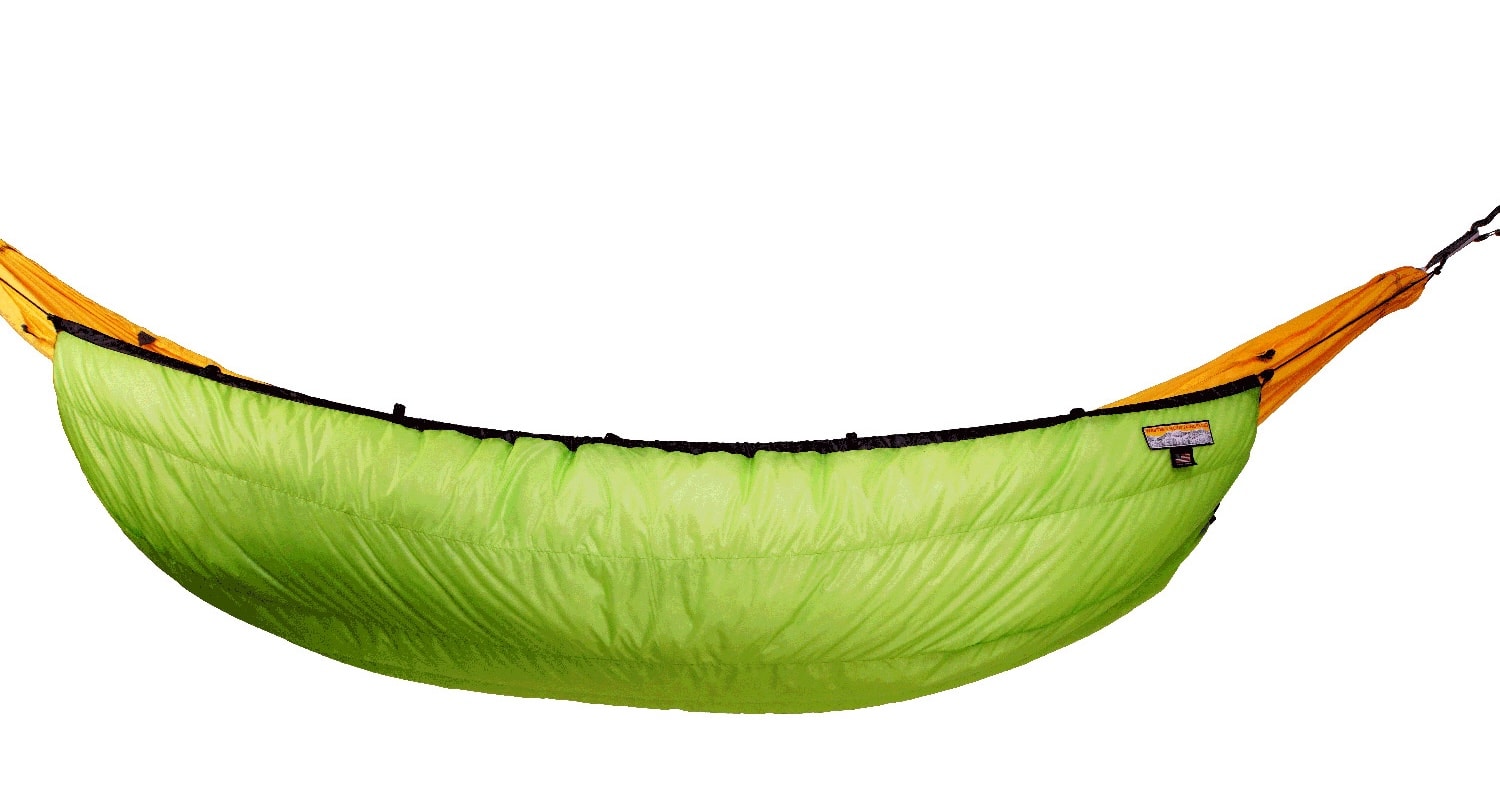
What we like: Incredibly light and thoughtfully engineered, the Slinglite underquilt hails from a globally recognized and trusted manufacturer of sleeping bags that’s making waves in the hammock camping scene.
When it comes to hammock camping (or any kind of camping), staying warm is non-negotiable. Western Mountaineering’s Slinglite underquilt is a true MVP. These folks have been churning out top-notch sleeping bags for half a century, so they know a thing or two about keeping you cozy in the great outdoors.
The Slinglite features 850 fill power goose down with continuous baffle chambers that’ll keep you comfortable down to 20°F. Fine-tune your setup with corner-mounted cordstops for the perfect night’s sleep.
Its rough and tumble 15-denier Sil Nylon Taffeta shell keeps you warm and dry inside, while its water-resistant exterior repels moisture.
This ultralight underquilt weighs just 15 oz. and compresses down to 5” x 10”, so it’s a solid pick for backpackers who see camp shoes and full-length toothbrushes as luxury items. Although it has the best warmth-to-weight ratio of any underquilt on this list, the sticker shock may be too much for some to overlook. Western Mountaineering products aren’t cheap, so if you’re tight on cash, other options on this list will fit the bill. Keep scrolling!
Tech Specs
- Weight: 15 oz.
- Price: $345
- Insulation type: Down
- Temperature rating: 20°F
Pros and Cons
- Pro: Weighing in at 15 oz., it’s an ultralight hammock camper’s dream
- Pro: Western Mountaineering’s 50-year presence in the outdoor industry speaks volumes about the quality of its gear
- Pro: Continuous baffle design provides a steady flow of insulation, guaranteeing comfort from dusk till dawn
- Con: Buyers on a tight budget may be deterred by its hefty price tag
Buy at Amazon
Buy at Backcountry
Jacks R Better Mt. Washington 3
What we like: Jacks R Better epitomizes cottage industry excellence with the Mt. Washington 3, a community favorite that pairs with nearly all hammocks. You can count on it to keep you warm during three-season backcountry adventures.
Jacks R Better Mt. Washington 3 underquilt is another fan favorite in the hammocking community. This versatile underquilt is compatible with your favorite hammock brands, including ENO, Hennessy, Warbonnet, Dutchware Chameleon, or your DIY creation. The quilt’s suspension system, complete with shock cords and micro-carabiners, allows for quick and easy installation.
The Mt. Washington 3 is available in a three-season (20°F) and four-season model (0°F). Both styles feature a dual differential-cut design that contours to your body, with constant height radial baffles to maintain loft.
The Mt. Washington 3 carries a 33% over-stuff by weight. This design choice means less down migration and allows the quilt to maintain its comfort rating even if the down loses some of its loft between cleanings.
Tech Specs
- Weight: Starting at 19.5 oz.
- Price: Starting at $230
- Insulation type: Down
- Temperature rating: 0°F and 20°F
Pros and Cons
- Pro: Dual differential-cut design contours to the body while constant height radial baffles maintain loft and comfort
- Pro: Over-stuffed to reduce down migration and maintain its comfort rating
- Pro: Micro-carabiners and shock cords make setup simple and quick
- Con: Limited customization options
Hammock Gear Economy Incubator
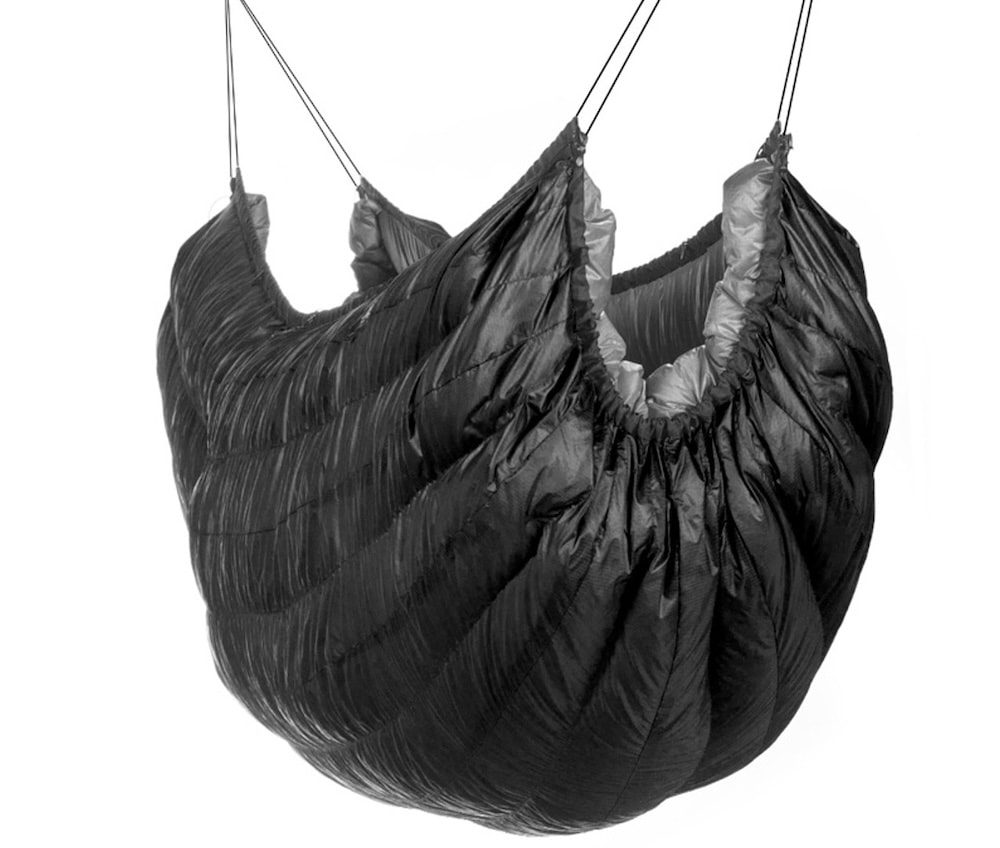
What we like: When winter’s bone sets in, the Hammock Gear Economy Incubator underquilt brings the heat. Its unique, contoured design guarantees exceptional warmth and comfort down to its temperature rating.
Hammock Gear’s Economy Incubator has upped the ante with 850 fill power down insulation, delivering warmth for your sub-zero adventures. Its DWR-coated 20-denier nylon taffeta outer fabric acts as a protective layer against the elements while remaining breathable.
What sets this underquilt apart are the nine anatomically contoured, differential-cut baffles that run the length of the underquilt. The baffles simulate your body’s natural curve in a hammock, offering unparalleled comfort and insulation. With three points of adjustment, you can fine-tune the fit of the Incubator to your liking.
The Incubator proves its reliability when you least expect it. One hiker recounts staying toasty in the underquilt during a December backpacking trip, even when a sudden snowstorm rolled through in the middle of the night.
Tech Specs
- Weight: Starting at 18.86 oz.
- Price: Starting at $219.95
- Insulation type: Down
- Temperature rating: 0°F to 40°F
Pros and Cons
- Pro: Offers extensive customization options
- Pro: Has draft collars on both ends of the underquilt
- Pro: Adjustable secondary suspension system
- Con: Beginners may need a short break-in period to get comfortable dialing in their suspension system
Arrowhead Equipment Jarbridge River
What we like: The Jarbridge River’s top-quality synthetic insulation and ¾ length design are perfect for those who want to enjoy warm summer trips without the risk of overheating.
Measuring 42 inches x 58 inches, Arrowhead Equipment’s Jarbidge River three-quarter length underquilt delivers coverage from shoulders to ankles, making it an ideal choice for those who want partial coverage on summer trips without waking up drenched in sweat.
And for campers and kids under 5 feet, the Jarbidge River underquilt offers a wallet-friendly alternative to full-length quilts without skimping on quality.
The quilt’s outer is constructed with 30 ∂enier Ripstop Nylon and treated with a DWR coating, a fierce combination ensuring longevity and making your underquilt resistant to humid nights and summer rainstorms.
Tech Specs
- Weight: Starting at 12 oz.
- Price: Starting at $115
- Insulation type: Synthetic
- Temperature rating: 0°F to 60°F
Pros and Cons
- Pro: Perfect for campers and kids under 5 feet looking for a cost-effective alternative to a full-length quilt
- Pro: Its ¾ length design is ideal for warm summer trips
- Pro: Synthetic insulation stands up better to summer rainstorms and muggy conditions than down insulation
- Con: Not recommended for cold-weather campers looking for head-to-toe coverage
Loco Libre Carolina Reaper
What we like: The Carolina Reaper epitomizes craftsmanship, embracing the cottage industry’s commitment to quality material, expert workmanship, and precision.
Started in 2015 by George “PoBoy” Carr, Loco Libre is a one-man band cottage company devoted to pushing the boundaries of underquilt design.
The Carolina Reaper is one of the most customizable underquilts on the market, offering lengths from 50″ up to 83″, and can be sized in one-inch increments.
The Carolina Reaper blends the best of nature and technology to offer unmatched performance. It’s stuffed with responsibly sourced 900 fill power goose down with an Argon 90 nylon outer shell and DWR finish that provides unbeatable protection against wind and water.
Chevron baffles ensure even distribution of down to ward off cold spots, plush draft collars and a secondary suspension system seal in warmth, and Beastee Dees offer extra attachment points for a snug fit.
Tech Specs
- Weight: Starting at 19 oz.
- Price: Starting at $280
- Insulation type: Down
- Temperature rating: 0°F to 40°F
Pros and Cons
- Pro: Comes in a variety of lengths and can be customized in 1-inch increments for a tailored fit
- Pro: Draft collars and a secondary suspension system seal in warmth
- Pro: Beastee Dees add versatility by providing extra attachment points
- Con: Boutique cottage companies like Loco Libre are limited in production capacity, which can mean longer turnaround times for custom orders
OneTigris Night Protector
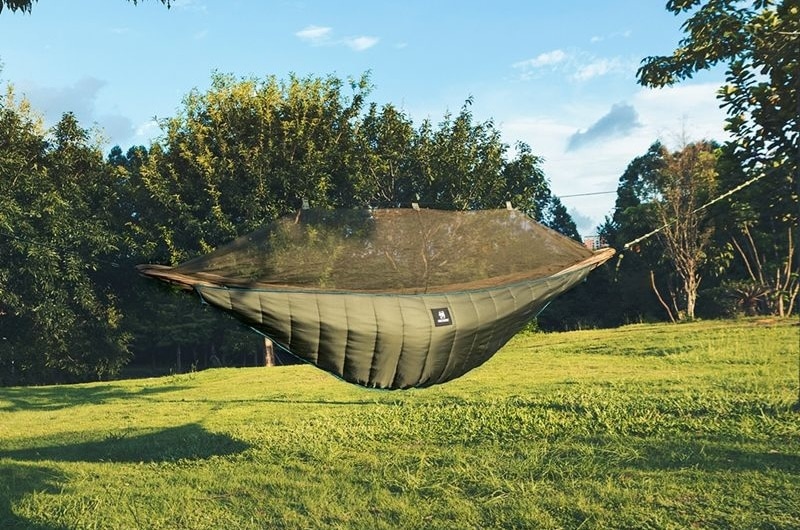
What we like: Backed by a chorus of satisfied Amazon customers, this underquilt is the undisputed choice for budget-conscious hammock campers who demand quality without breaking the bank.
Tactical gear brand OneTigris’s Night Protector underquilt is a budget-conscious choice that doesn’t skimp on performance. Its polyester filling offers impressive insulating power to keep you cozy during your hammock camping escapades in most two to three-season conditions. The 20-denier ripstop nylon shell with a DWR coating promises durability and water resistance, while a polyester liner retains heat without compromising comfort.
Some users have raised concerns about the Night Protector’s suspension system. The quilt uses shock cords connected to the hammock via mini carabiners. While it gets the job done, it lacks adjustability, which can hinder ventilation. To get around this, resourceful campers have added a paracord line to adjust the sag of the underquilt for airflow.
While the Night Protector comes with a steeper weight penalty than premium alternatives, if you’re willing to make compromises elsewhere in your backpacking kit, you can enjoy a budget-friendly underquilt option that balances affordability and comfort.
Tech Specs
- Weight: 28 oz.
- Price: $48
- Insulation type: Synthetic
- Temperature rating: 40°F
Pros and Cons
- Pro: Ideal for hammock campers seeking value at an affordable price point
- Pro: Compatible with a variety of hammock models
- Pro: More than 1,200 satisfied customers back its quality
- Con: Along with its bulkier size compared to more premium models, some users have complained about the quilt’s suspension system lacking adjustability and limiting airflow
A Buyer’s Guide To Underquilts: Key Considerations and Features
When choosing an underquilt, think about your personal preferences and the demands of your trip. Even with a tempting price tag, the underquilt you’re eyeing might not provide enough warmth or coverage for a good night’s sleep. Use these guidelines to steer you in the right direction.
Size
Generally, hammock underquilts come in three lengths: full-sized, three-quarter, and half-length. Most hammock campers opt for a full-length quilt for head-to-toe protection against the cold and elements. They’re also popular with cold-sensitive campers and taller folks who need more coverage.
On the opposite end of the spectrum are half-quilts, which look exactly as their name suggests. Coverage is restricted to only the midsection of your hammock, and they’re the preferred choice for ultralight hikers, summer conditions, and warm sleepers.
Three-quarter length underquilts offer that “goldilocks” ratio between warmth and weight. With coverage from shoulder to ankle, they’re lighter than a full-length underquilt but warmer than half-length quilts. If your toes get chilly, throw on an extra pair of socks, down booties, or place a sitting pad underneath your feet to keep your digits toasty.
Temperature Rating
Like sleeping bags, hammock underquilts have temperature ratings to help you understand how well they work under various conditions. These ratings usually fall into two categories:
- Comfort Rating: The lowest temperature your underquilt will keep you comfortably warm at night.
- Lower Limit Rating: This is the lowest temperature your underquilt will keep you warm without making you shiver. For cold sleepers, we recommend adding 20°F to achieve an optimal comfort rating for your underquilt.
As far as standardization goes, most U.S.-based gear manufacturers use EN or ISO testing methods to measure and classify temperature ratings of sleeping bags, top quilts, and underquilts.
However, this isn’t a universally recognized or enforced system. Many big-name brands have adopted these standards into their products, but cottage companies prefer to use their own criteria to rate their underquilts. Reviews and user reports can also help you gauge an underquilt’s true comfort or lower limit rating.
Filling
The type of insulation in your underquilt also matters. Down is an all-natural material made from goose or duck plumage. Down is insulating, compressible, and offers a superior warmth-to-weight ratio.
On the flip side, down-filled underquilts usually cost more than their synthetic counterparts. Another drawback with down is that it doesn’t mix well with water. When down gets wet, it loses its fluffiness or “loft,” the thing that traps and circulates your body heat to keep you warm. Some down quilts are treated with a water-repellent coating (DWR), but they can only withstand so much moisture before their water resistance wanes.
If you’re trying to shave ounces from your hammock kit, synthetic underquilts aren’t your best bet. Synthetic down is cheaper than natural duck or goose down but weighs more and loses its loft faster. But when the forecast calls for rain, synthetic fill excels–retaining insulation, repelling moisture, holding its shape, and drying out quickly, even after a thorough soak.
Suspension System
A well-designed underquilt suspension system simplifies the setup process and prevents cold from sneaking between the gaps of your hammock and underquilt.
Look for an underquilt with a simple suspension system you can set up without a fuss. Every underquilt has a primary suspension system that uses straps, bungee cords, shock cords, or some mechanism to keep your quilt properly aligned and tensioned.
Other underquilts have a secondary suspension system to secure your quilt’s positioning and prevent issues like quilt creep or unwanted drafts. This might look like additional cords or cinch points along the underquilt’s edges or corners to allow for precise adjustments in fit or angle.
Time to Get Hanging
Sign up for Weekend Wanderer to join 10,000+ readers getting epic travel ideas every week.
Seen in: Backpacking Gear, Camping, Gear, Hammocks

